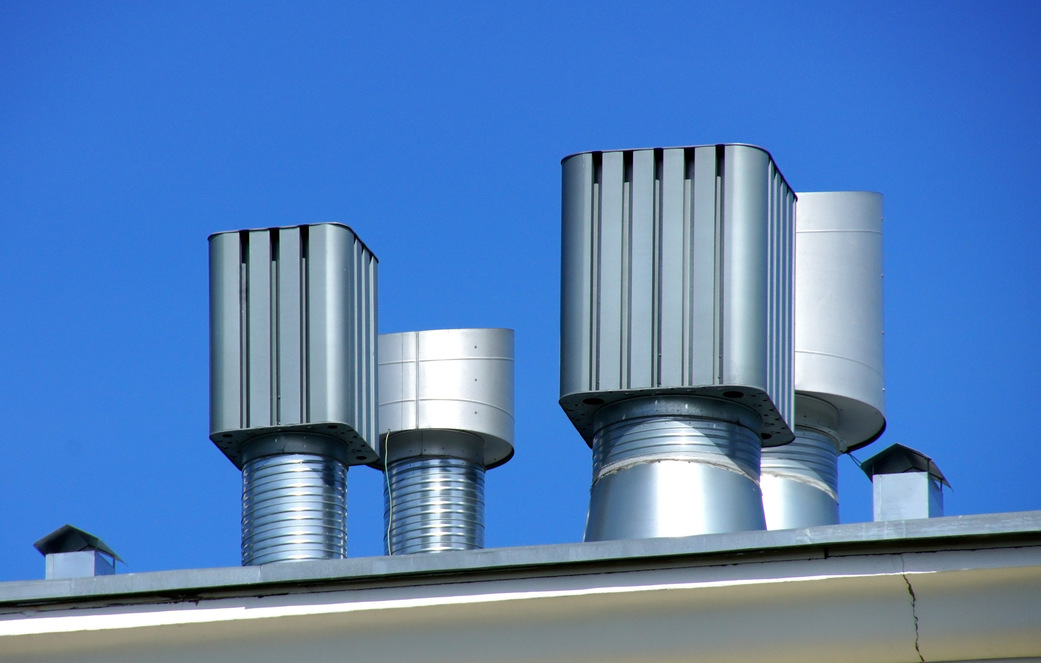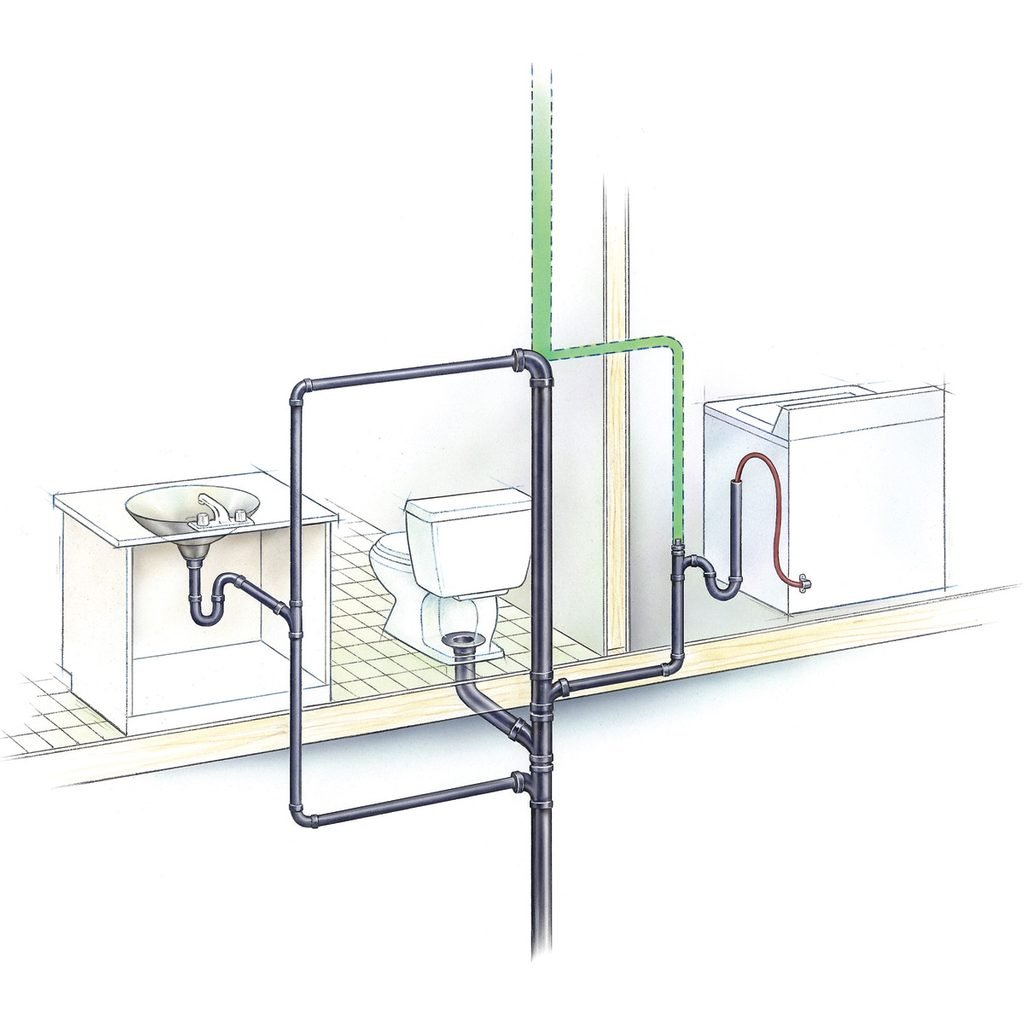Maintaining Correct Ventilation in Your Plumbing System: Why
Maintaining Correct Ventilation in Your Plumbing System: Why
Blog Article
Were you in search of selective information around What Are Plumbing Vents and Why Are They Important??

Correct air flow in pipes systems is commonly overlooked, yet it is vital for preserving the performance and safety and security of your home's plumbing. Air flow helps regulate atmospheric pressure, protect against the accumulation of unsafe gases, and make sure the efficient elimination of waste. In this overview, we will check out the importance of correct plumbing air flow, how it functions, and the advantages it brings to your plumbing system.
Recognizing Air Flow in Pipes
Ventilation in plumbing refers to the network of pipelines that permit air to flow with the water drainage system. These vents offer numerous purposes, consisting of controling air pressure within the pipes, protecting against sewage system gases from going into the home, and assisting in the smooth circulation of wastewater.
How Ventilation Functions in Plumbing Solutions
Air Pressure Policy
Proper ventilation keeps well balanced atmospheric pressure within the plumbing system. When water streams through pipes, it displaces air. Without adequate air flow, this displacement can develop unfavorable pressure, leading to reduce drains pipes or siphoning of water from catches, which can cause undesirable odors to permeate into the home.
Preventing Sewage System Gas Accumulation
Among the most critical functions of pipes vents is to prevent drain gases, such as methane and hydrogen sulfide, from accumulating within the home. These gases can position significant health and wellness dangers and are highly flammable. Vent pipelines allow these gases to leave securely outdoors.
Helping in Waste Elimination
Ventilation aids in the effective elimination of wastewater by preventing airlocks in the water drainage system. When air can flow freely via the vents, it enables water and waste to flow smoothly with the pipes, reducing the risk of clogs and backups.
Types of Pipes Vents
Key Stack Vent
The primary stack air vent, likewise referred to as the vent stack, is the main vent in a pipes system. It expands from the primary drainpipe align via the roof covering, permitting gases to get away and fresh air to enter the system.
Branch Vent
Branch vents connect to the primary pile air vent and serve private components, such as sinks, commodes, and showers. These vents make certain that each component has sufficient air flow to function effectively.
Air Admittance Shutoff (AAV).
An Air Admittance Valve (AAV) is a one-way shutoff that allows air to go into the pipes system without the need for a typical air vent pipeline extending with the roof covering. AAVs are commonly utilized in improvements or areas where setting up a basic vent is unwise.
Indications of Poor Air Flow in Pipes.
Slow Draining Fixtures.
If your sinks, bathtubs, or toilets are draining slowly, it could be a sign of bad ventilation. Inadequate air flow can create a vacuum cleaner effect, making it challenging for water to drain pipes properly.
Gurgling Sounds.
Gurgling sounds coming from drains pipes are typically an outcome of air being sucked through water traps due to negative pressure in the pipelines. This is a clear indication of not enough air flow.
Undesirable Smells.
Sewage system smells inside your home are a warning that your plumbing system is not properly aerated. This could indicate that sewage system gases are not being effectively aired vent outside, leading to possibly dangerous conditions.
Common Ventilation Errors.
Poor Vent Sizing.
Making use of undersized vent pipelines can bring about bad air circulation and pressure inequalities in the system. It's necessary to use vents that satisfy the certain demands of your plumbing system.
Improper Vent Placement.
Placing vents too far from the fixtures they serve can decrease their efficiency. Proper placement guarantees that air can flow openly and successfully with the system.
Ignoring Code Demands.
Building regulations provide particular standards for plumbing air flow. Neglecting these codes can lead to a system that fails to operate appropriately and might cause costly repair work or carcinogen.
Advantages of Proper Ventilation.
Boosted System Efficiency.
Appropriately ventilated pipes systems operate a lot more successfully, with fewer clogs, faster draining pipes, and much less strain on the pipes. This efficiency extends the lifespan of the plumbing system.
Improved Air Quality.
By preventing sewer gases from entering your home, proper air flow adds to far better interior air high quality, making your living setting healthier and a lot more comfortable.
Avoiding Water Damages.
Appropriate ventilation helps protect against water from being siphoned out of catches, which can lead to sewer gases entering the home and causing water damage over time.
Actions to Make Certain Correct Air Flow.
Consulting Pipes Codes.
Always speak with neighborhood plumbing codes when making or customizing your plumbing system. These codes supply the necessary standards for appropriate venting and guarantee your system fulfills safety criteria.
Regular Assessment and Upkeep.
Regular examinations can help identify potential ventilation issues before they end up being major issues. Maintenance tasks, such as cleaning up vent pipes and looking for clogs, are crucial for keeping the system in good working order.
Professional Installment.
For brand-new installations or significant alterations, it's smart to employ a specialist plumber. They have the expertise to guarantee the air flow system is properly created and installed according to code.
Verdict.
Appropriate ventilation is a crucial component of any pipes system, guaranteeing that it operates effectively and securely. By comprehending the importance of ventilation, identifying the signs of poor air flow, and taking steps to keep your system, you can prevent costly problems and secure your home's air top quality.
4 Things You Should Know About Your Plumbing Vents
What Plumbing Vents Are
Also called a vent stack, a plumbing vent is a vertical pipe attached to your drain line that runs through your roof. The plumbing vent pipe, or plumbing air vent, removes gas and odors from your plumbing system and allows fresh air to enter the pipes, helping the water to flow out of the drain pipes.
What Plumbing Vents Do
Plumbing vents have two basic functions. One of which is to allow unpleasant smelling wastewater and sewer gasses to escape your plumbing system instead of entering your home. Plumbing vent pipes are typically located on roofs, away from windows, to ensure the fumes exit the home completely.
The other function of the plumbing vent is to move fresh air into your plumbing system. This helps move water through every plumbing fixture in your house, like toilets and sink drains. Think of the way in which you need to let a little air into the bottle as you pour soda in order to make the drink flow smoothly.
Different Types of Plumbing Vents
True vent: This is the most common vent option. In simplest terms, a true vent is a vertical pipe attached to your drain line that exits through the roof. They often function as the main vent that other fixtures can connect to. Re-vent pipe or auxiliary vent: Attached to the drain line near specific plumbing fixtures, re-vent pipes run up and over to connect to the main vent. Common vent: Two plumbing fixtures installed on opposite sides of a wall are typically tied into the vent stack using something known as a sanitary cross. Wet vent: This venting option operates as a drain pipe and a vent at the same time. Wet vent drainage systems drain water from one fixture while venting the air from another. Although they’ve been used for over 100 years, wet vent systems have only recently been added to the plumbing code in many areas. If you’re planning on installing one in a bathroom remodel, make sure you check your local code prior to construction. Loop vent: For free-standing fixtures like kitchen island sinks, loop vents are ideal. These vent pipes run under the floor, rise from the P-trap, and create a loop inside the cabinet sink. Air admittance valve: An AAV is a one-way mechanical valve typically installed at the site of the plumbing fixture. AAVs allow venting to occur without having to tie into a larger venting system. They’re ideal for venting fixtures where you aren’t able to easily connect to an existing vent system. Common Plumbing Vent Issues
Although vent pipes typically don’t have water flowing through them, they’re still subject to many typical plumbing issues. For example, clogs are one of the most common problems associated with sewer vent pipes. If your vent pipe gets clogged, all of your plumbing fixtures tied into the vent stack will be affected.
A sink with a slow drain that bubbles and gurgles or a strong sewage smell around your toilet are both indicators that your toilet vent pipe is clogged. Because most vent pipes exit through the roof, old leaves, twigs or even a bird’s nest could be clogging the pipe.
Clogs in your vent pipe system cause a buildup of negative pressure, meaning that water won’t be able to flow out of your home very well. It’s similar to putting your finger over the opening of a straw to trap water inside. When you remove your finger, the water is able to flow out of the straw.
If you suspect you have any blockage in your vent, make sure you have a professional come examine the situation. Left unchecked, a blocked air vent can lead to other costly repairs, like leaks and sediment buildup.
Under Pressure
Pipe vents are essential aspects of a home’s plumbing system. Owning a home means learning about all sorts of things you never put much thought into before. But by understanding as much as you can about the important systems of your home, you can keep those budgets intact and those anxiety levels low.
https://www.homeserve.com/en-us/blog/home-improvement/plumbing-vents/

Do you appreciate reading about ? Put feedback further down. We will be happy to see your thinking about this posting. We are looking forward to see you back again soon. I beg you take the time to promote this content if you enjoyed it. Thanks a bunch for your time. Please stop by our blog back soon.
Go Services Report this page